Are left-hand drive "Japanese" assembled in Japan? Real "Japanese women": truth and myths about the cars of the country of the rising sun.
Japan is one of the most unique countries peace. After the failure in the Second World War, she literally rose from the ashes, like a Phoenix bird.
First, consider geographical position countries. Japan is located on four islands A: Shikoku, Honshu, Koshu, Hokkaido and numerous small islands. The population is approximately 122.2 million, which is the most interesting 99% of the population are native Japanese. The revolution of 1866-1896, also known as the Meiji Restoration, played an important role in the development of the country's economy and industry. The bourgeois reforms carried out became the basis for the development of capitalism.
According to the constitution of 1889, Japan was proclaimed a monarchy headed by an emperor. However, legislative power was divided between the emperor and parliament. At the turn of the 19th and 20th centuries, Japan entered the stage of monopoly capitalism - the militarization of Japan under the leadership of Emperor Hirohito. In 1940, Japan entered into military alliances directed against the USSR, Great Britain and the USA, with Nazi Germany and fascist Italy, and in 1941 entered into a second world war, which ended for her in defeat in September 1945.
Postwar Japan
After the end of the war, Japan faced a dilemma - to focus entirely on overcoming the then hyperinflation, or to direct all efforts to restore production, which had been badly damaged during the war. The government urgently needed to look for ways out of their crisis. The second path was chosen.
Japan adhered to the reform model, the main points of which were the following: providing cheap and targeted loans, state control over foreign economic and foreign exchange activities, pursuing a policy of protecting national capital in the banking and manufacturing sectors, protecting the agricultural sector (providing subsidies to agricultural workers) and, most importantly, was created its own model of state regulation of the economy, which was based on the interaction of the economic system of private business and the administrative apparatus. The results were not long in coming.
In less than ten years, Japanese industrial production has been restored by 80%. Japan moved away from a policy of strict financial regulation (competitiveness national currency and industry in the world spoke for itself). After the war, the country was forbidden to have armed forces, which allowed the government to concentrate on the agrarian issue (most of the land was given for ransom to peasants) and to focus on the development of science and new technologies. Such a sharp economic jump was called the "Japanese economic miracle."
Japan's modern economy
By the 1970s, Japan had become the second economic power in the capitalist world in terms of gross national product and industrial production. Today it is in second place after the United States in terms of economic development. Its GDP is about 4.5 trillion dollars. Moreover, the country ranks third in the world, after the United States and China, in terms of purchasing power parity. This is a country of private enterprise with low taxes: the total amount of taxes is lower than in other large Western countries, in 2007 it amounted to 26.4% of GDP.
The largest Japanese companies are Toyota Motor, NTTC DoKoMo, Canon, Honda, Takeda Pharmaceutical, Sony, Nippon Steel, Tepko, Mitsubishi Estate, and Seven & Eye Holding. There are also the largest bank assets in terms of size, such as Japan Post Bank (assets of 3.2 trillion US dollars), Mitsubishi UFJ Financial Group (assets - 1.2 trillion US dollars), Mizuho Financial Group ( assets - 1.4 trillion dollars) and Financial Group "Sumitomo Mitsui Financial Group" (assets - 1.3 trillion dollars). The Tokyo Stock Exchange (as of December 2006), with a market capitalization of over 549.7 trillion yen, is the second largest in the world.
However, economic growth stalled slightly in 1990 due to overinvestment and domestic policies aimed at eradicating excess speculative capital from the stock market as well as from the real estate market. And already in 2005, it began to recover: GDP growth for this year amounted to 2.8%, which exceeded the growth rates of countries European Union and the US this year.
Japanese industries
Now about the Japanese industry. She, like the economy, has passed thorny path. Until 1950, the industrial potential of the country was heavy industry, which was typical of the period of the country's militarization. With the ban on maintaining the armed forces, a course was taken for the development of high-tech industries with some containment of energy-intensive and metal-intensive industries. 12% of world industrial production today falls on the share of this country. The development of the following industries is in full swing.
1) Ferrous metallurgy. It is mainly focused on imports. Currently, Japan provides 14-15% of the world's steel production. Nippon Seitetsu is the leader in metallurgy. Most of factories located on the islands of Shikoku and Honshu. Polymetallic ores, sulfuric and copper pyrites are found in almost all major islands- Shikoku, Honshu, Koshu and Hokkaido. But lead and aluminum have to be imported from Australia, Mexico and Canada. As well as iron ore (exported from India, Australia, Chile and South Africa) and coking coal (coming from Canada, USA and Australia). And such rare elements as thallium, cadmium, selenium, indium, germanium, tellurium and rhenium are obtained by recycling waste from coke production or polymetals and copper.
2) Nuclear power. On this moment There are 39 power units in the country. In nuclear energy, monopolies such as Mitsui, Mitsubishi and Sumitomo play an important role. Japan consumes 5% of the world's electricity production. In 2000, the country ranked third in electricity production (1012 billion kW) after the United States and China. Japan was one of the first to start using non-traditional energy sources. It is known that this country is famous for acting and extinct volcanoes, fumaroles and geysers (they are located on the island of Honshu). Already in the 1970s, the first geothermal power plant. By the early 1990s, millions of "solar houses" appeared in the country - they used solar radiation to heat residential complexes and heat water.
3) Mechanical engineering. Mechanical engineering in Japan is one of the most developed in the world. The main centers of mechanical engineering are located in Tokyo, Nagoya, Yokohama, Kobe, Osaka, Nagasaki and in the northwest of Kyushu). The 1970s were the beginning of a boom in Japanese cars. Due to the "Oil Shock" (1973 gas price spike), buyers began to prefer small, fuel-efficient cars. Just on such cars, Japanese scientists are working on the domestic market of the country. Then they started talking about the "Japanese" stage in the global automotive industry. In 1980, Japan passed the 10 million milestone in car production, and in the late 1990s, the country took first place (and held it for 15 years) in the world in car production. Now the production of cars in Japan itself has declined due to the appreciation of the yen. However, Japanese car factories operate all over the world (in the USA and in Southeast Asia).
4) Light industry. It works on local chemical fiber, cotton and wool from Australia, South Africa and the USA. The Japanese are a nation that honors its centuries-old traditions, so do not be surprised that ceramic production occupies an important place, both a tribute to traditions and a very profitable enterprise (there are over 170 kaolin deposits in the country). The country is also rapidly developing woodworking, which, in terms of the number of enterprises, is second only to the textile and food and flavor industries. There are about 30,000 plywood and sawmills in Japan. Demand both in the domestic and foreign markets is enjoyed by products manufactured at specialized enterprises for the production of containers, national Japanese shoes - geta, umbrellas, dishes, fans, bamboo pipes, etc. Woodworking centers are located in Tokyo, Kobe, Nagoya, Yokohama, Osaka, Okayama, Hiroshima and on the islands of Kyushu and Hokkaido.
Need help with your studies?
Previous topic: Australia: population and economyNext topic: Foreign Asia: natural resources, population, economy
High quality is famous all over the world. Due to the reliability and quality of Japanese vehicles are among the very best. The most famous Japanese car brands that have become legendary in the world market are such companies as Toyota, Honda, Nissan and Mazda. These companies, thanks to the quality of their cars, as well as the optimal price / quality ratio, have won the hearts of millions of drivers around the world.
There are also well-known more expensive brands in the luxury segment: which produces luxury cars and Infiniti, which produces elegant expensive car models. We offer you a complete catalog of Japanese car brands.
Traditionally, we include both the most popular car companies in Japan and less popular car brands. Our catalog also includes some automotive companies in Japan that currently either do not exist or no longer exist.
All Japanese car brands

As we have already said, Japanese automotive products are famous all over the world. Their innovative design, performance, first-class quality, market-oriented approach to reasonable pricing, once again proves Japan's economic advantage over many other countries.
For example, the owners of such companies as and have relied on the quality and unique marketing of each individual model. As it turns out, for millions of new car buyers, car reliability and value for money are the most important thing when making a final decision to buy a car. Approximately the same policy is followed by all other well-known Japanese auto brands. That is why Japanese cars successfully compete with and.
Most Popular Japanese Car Brands
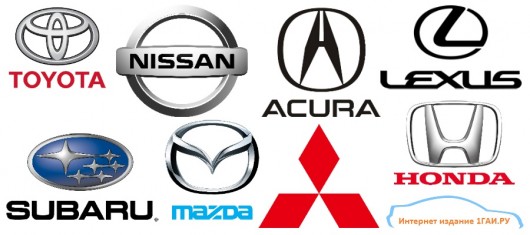
Toyota is by far the most popular brand in Japan. But it's not just Japan's most popular automaker. The fact is that for several years. This success became possible thanks to the special policy of the company within the corporation, the requirements for the quality of the supplied components and the quality of the assembly of new cars. But the main thing is the cost of production and selling factory prices. Thanks to a special marketer, Toyota's pricing is the most optimal in the world market.
![]()
- Years: 1937 - present
- Headquarters: Toyota, Aichi, Japan
- Founder: Kiichiro Toyoda
- Website: http://www.toyota-global.com/
- Additional Information: Important events
In 2014, Toyota celebrated its 75th anniversary. Unlike European car brands, many of which have been on the market for much longer, Toyota does not lag behind its European competitors and even outperforms them in some moments.
For example, the quality and reliability are significantly better than many cars from Europe. This Japanese company manages to keep a fresh and innovative approach in the production of new products. As a result of new developments, new concepts and new technologies appear every year, which are created with a margin for the future.
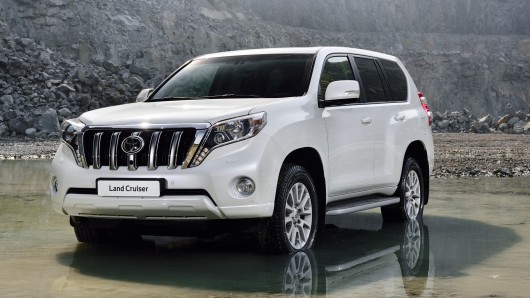
This is what allows the company to develop and not stop there. Over the past few years, a lot has appeared in new cars of the brand, many of which seemed fantastic 5-7 years ago.
The safety of new Toyota vehicles has also improved last years. For example, many cars received top awards (Top Safety Pick) in the annual (US Insurance Institute for Highway Safety). More details about the result of crash tests of Toyota cars you can see here or in the section "Crash Tests of Toyota cars".
LEXUS

- Years: 1989 - present
- Headquarters: Nagoya, Japan
- Founder: Eiji Toyoda
- Website: http://www.lexusint.com/
- Additional Information: Important events
Toyota has a separate division that manufactures expensive luxury cars. This brand is called .
Lexus competes with other Japanese luxury sub-brands such as (a division of Nissan) and Acura (a division of Honda).
In recent years, popularity has been growing all over the world, thanks to stunning new models. So, having appeared for the first time on the market in 1989, releasing the L400 model, the Lexus brand has gained immense popularity over time. As a result, the company managed to remove Acura's leadership from the pedestal.

Despite the fact that the parent company (Toyota) also produces cars, outwardly you are unlikely to find similarities between Toyota and Lexus cars. Premium brand products are fundamentally different from cheaper Toyota cars.
Thanks to extraordinary design and luxurious style, Lexus cars have become popular all over the world. In 2007, Lexus significantly increased its presence in the global market, starting its production and sales of cars in new countries.
As a result, already in 2007, Lexus was present in more than 50 automotive markets. different countries. The number of countries where the Japanese brand is present has only increased since then.
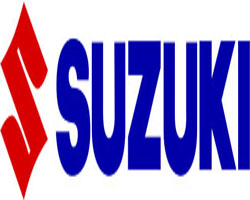
- Years: 1909 - present
- Headquarters: Hamamatsu, Shizuoka, Japan
- Founder: Michio Suzuki
- Website: http://www.globalsuzuki.com/
- Additional Information: Important events
Initially, this company was engaged only in the production of motorcycles. But after some time, it managed to take 10th place among all automakers in the world in terms of the number of new cars produced. This target was reached in 2011.
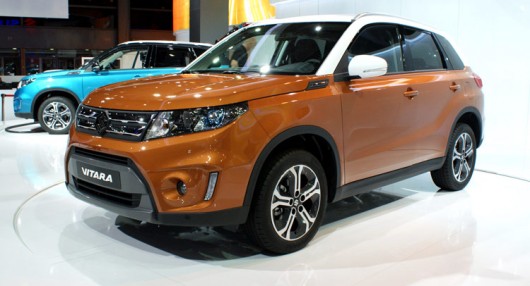
In addition to motorcycles, Suzuki produces cars, all-terrain vehicles, boats, trucks and buses. All this is produced at 35 factories located in 23 countries.
MAZDA

- Years: 1915 - present
- Headquarters: Fuchu, Aki, Hiroshima, Japan
- Founder: Ford Motor Company, Jujiro Matsuda
- Website: http://www.mazda.com/
- Additional Information: Important events
It is one of the oldest automobile manufacturing companies in Japan. The history of the company began at the beginning of the 20th century, at the dawn of the automotive industry. Having passed a long way of development, it has become one of the largest companies in the world volume of car production.
In 2011, Mazda sold around 3 million vehicles worldwide. But the most amazing thing is that the volume continues to grow. Given that most new cars are still built in factories in Japan, the scale of production and global sales is surprising.
In 1967, acquired a 25 percent stake in Mazda. Ford then increased its shareholding, but by 2014, the American automaker had reduced its shareholding to its lowest point (down to 2 percent in 2014).

During the close and close cooperation of the Japanese owners of Mazda with the Ford company, separate divisions of such companies as Autozam, in Efini, in Eunos and Xedos, were created.
In the entire history of Mazda, the world most remembers unique sports cars with powerful rotary engines. But the most important best-selling sports car, of course, is the Mazda MX-5 roadster. By the way, this was recognized by all the automotive critics of the world and even the TopGear TV show.
HONDA

- Years: 1946 - present
- Headquarters: Minato, Tokyo, Japan
- Founder: Soichiro Honda, Takeo Fujisawa
- Website: http://world.honda.com/
- Additional Information: Important events
This Japanese automaker started out as a motorcycle manufacturer. But later, having started producing car engines, it entered the top world leaders in car production.
It is worth noting that, despite the expansion of the scope of activities, the mass production of motorcycles remained the main business for the company. .

The company started car production in 1969. Honda currently produces over 20 various models. The most popular Honda model is the Honda CR-V crossover. This Japanese brand remains an important player in the global automotive industry and continues to evolve with new technologies and new models.
ACURA
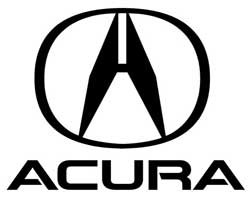
- Years: 1986 - present
- Headquarters: Minato, Tokyo, Japan
- Founder: Honda Motor Company Ltd.
- Website: http://www.acura.com/
- Additional Information: Important events
In 1986, Honda created a separate division, which received the name Acura. This brand produces premium cars that are sold mainly outside of Japan.

One of the famous Acura RDX models, which has received more than one award and a lot of positive feedback around the world.

- Years: 1970 - present
- Headquarters: Minato, Tokyo, Japan
- Iwasaki Yataro
- Website: http://www.mitsubishi-motors.com/
- Additional Information: Important events
Another of the most significant automakers in Japan, of course, is. The company has been cooperating with the American automobile group Daimler-Chrysler since 2000. This was necessary to overcome the serious financial problems that the Japanese company faced in the late 90s and early 2000s.
Financial difficulties were associated with several technical problems that were discovered in the late 90s in some models. As a result, this led to large financial losses for the company. Nevertheless, the company coped with its problems and continues to release good ones. Thanks to the new models (Lancer and Outlander), Mitsubishi managed to change the public's opinion about its products, and take an important place among the world's automakers.
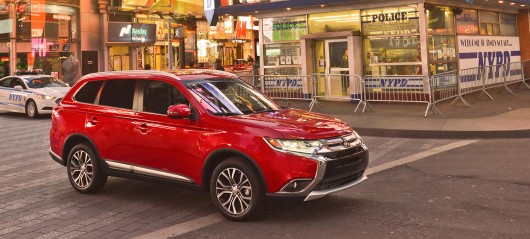
The most famous Mitsubishi model is the Pajero SUV, which competes quite successfully with such cars as the Toyota Land Cruiser and Nissan Patrol.

- Years: 1933 - present
- Headquarters: Minato, Tokyo, Japan
- Founder: Masujiro Hashimoto, Kenjiro Den, Rokuro Aoyama, Meitaro Takeuchi, Yoshisuke Aikawa
- Website: http://www.nissan-global.com/
- Additional Information: Important events
This car brand ranks 6th among all automakers in the world. Main markets for the company: Russia and China. In our country, Nissan and the State Corporation "Russian Technologies" have created a joint venture, which produces vehicles that enter not only the Russian and CIS markets, but also go to other countries.
In recent years, they have undergone significant updates and improvements, which ultimately reflected in the attractiveness of products on the market. As a result, over the past few years, demand for Nissan products has grown significantly on a global scale.

This Japanese automaker has managed to maintain its place in the market among the world's innovative auto companies. As a result, people began to show interest in many of the company's products, including models superior comfort. It is worth noting that Nissan did not feel very confident in this category of vehicles a few years ago.

Under this separate auto brand, Nissan sells. This machine is currently sold in 35 countries around the world. This model was launched in 2010 and has attracted a lot of attention since then.
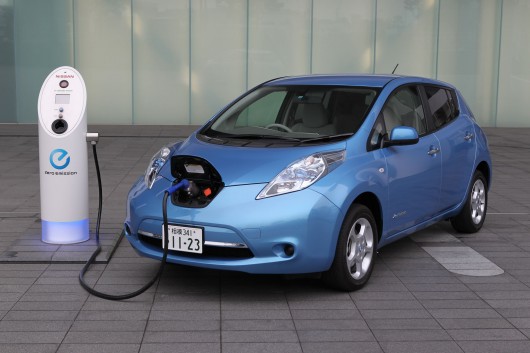
At the moment, Nissan Leaf is the world's best-selling completely in the world.
![]()
- Years: 1989 - present
- Headquarters: Hopewell Center, Wan Chai, Hong Kong
- Founder: Nissan Motor Company
- Website: http://www.infinity.com
- Additional Information: Important events
The Infiniti brand is a separate luxury division of Nissan, created in 1989 to produce luxury cars. Initially, Infiniti was created to sell cars in the United States. But more than 20 years later, the brand's automotive business has expanded. At the moment, Infiniti officially sells cars in more than 15 countries around the world.

Despite the fact that it creates cars based on Nissan products, the models produced have nothing to do with them. Unlike Nissan cars, Infiniti's lineup is represented by luxury vehicles. Currently, the premium brand produces more than 9 models, hoping to overtake the luxury company Lexus in the future. And, according to TV show hosts and a number of auto experts, this is quite possible in the near future.
Other incumbent automakers in Japan
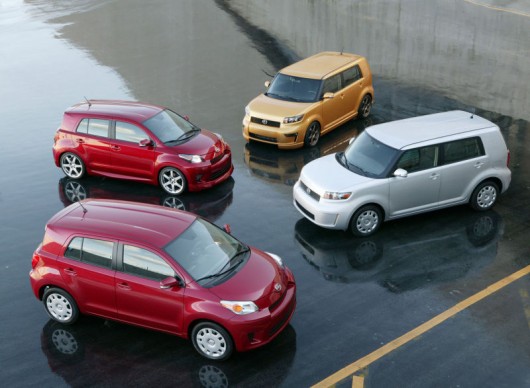
Here are some other, less popular on the world stage, Japanese car companies that manufacture vehicles that are currently operating.
Despite being less popular, you have probably heard of some car brands as well.
ISUZU

- Years: 1916 - present
- Headquarters: Tokyo, Japan
- Founder: Isuzu Jidosha Kabushiki-Kaisha
- Website: http://www.isuzu.co.jp/world/index.html
Formerly known as Chiyoda, Isuzu has a long history in the automotive industry. The history of the company began in 1916, when the gas, shipbuilding and engineering companies of Japan joined together to build a factory for the production of cars.

From that moment on, the company began to produce diesel engines, car accessories, spare parts, gasoline engines and of course cars. In general, the company specializes in the production of commercial vehicles and buses. But also the automobile brand has several SUVs and sports models in its arsenal.

- Years: 1907 - present
- Headquarters: Osaka, Japan
- Founder / Parent Company:
- Website: http://www.daihatsu.com/
Daihatsu Motor Corp is Japan's oldest automaker. company for its long history released a lot of popular compact, mid-size models, as well as SUVs. The company was originally named Hatsudoki Seizo. But in 1951, the brand was renamed Daihatsu.

A few years after the name change, the company signs an agreement with Toyota Motor Corporation to enter the capital of the automaker. Toyota currently owns 51 percent of Daihatsu.
Unfortunately, the company stopped producing cars due to financial problems. But recently the brand has been revived and under his name has been established, which are sold in the markets of Russia, the CIS and China.
Scion

- Years: 2002 - present
- Headquarters: Torrance, California, USA
- Founder: Toyota Motor Corporation
- Website: http://www.scion.com
Scion is a popular sub-brand of Toyota. Under this name, Toyota sells cars in the North American car market. The main direction of the company is the production of progressive cars for the younger generation of people.
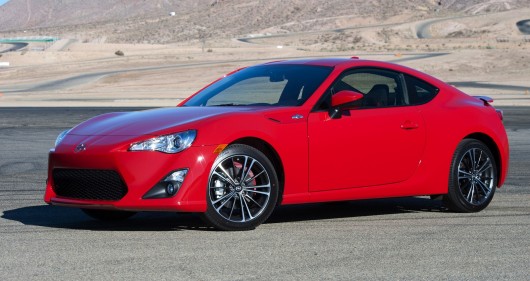
Unfortunately, in recent years, the company's sales have left much to be desired due to fierce competition in the US market. As a result, Toyota decided to stop producing cars under this brand, combining the entire model range with Toyota products.
Since, despite the decision made by Toyota, this has not yet been legally formalized.

- Years: 1953 - present
- Headquarters: Ebisu, Tokyo, Japan
- Founder: Kenji Kita, Shikuhei Nakajima
- Website: http://www.subaru-global.com/
Subaru is the manufacturing arm of Fuji Heavy Industries, an automotive transportation company. is the most famous manufacturer cars with a boxer engine and unique all-wheel drive technology.

Subaru is also known as a global manufacturer of rally cars.

- Years: 1968 - present
- Headquarters: Toyama City, Toyama Prefecture, Japan
- Founder: Akio Mitsuoka
- Website: http://www.mitsuoka-motor.com/
Mitsuoka Motors is small. Production is located in Toyama, Japan. The company produces cars with the classic design of old British cars from the 1950s and 1960s.
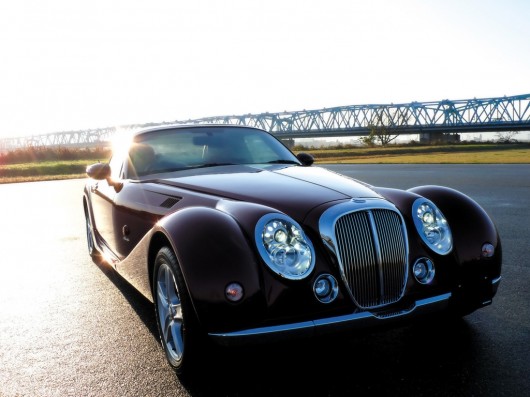
In addition to sedans, the company also manufactures commercial vehicles, including intercity and city buses. In addition, sports cars are produced under this brand. Mitsuoka Motors is also the main distributor of the most popular roadster in Japan (the retro classic TD2000).
Popular car companies in Japan that have ceased to exist
![]()

- Years: 1922 - 1957
- Headquarters: Tokyo, Japan
- Founder / Parent Company: Hiro Ota
- Website: Not available
Ohta Jidosha was once one of the most popular and largest car companies in the Japanese market. The brand was created in 1935. The company was founded even earlier - in 1922, which was called Kosoku Kilan Kogyo Co. Production and sale of cars continued until 1957. But for unknown reasons, Japan's largest automaker went out of business.

- Years: 1947 - 1966
- Headquarters: Suginami, Tokyo, Japan
- Founder / Parent company: Not available
- Website: Not available
Prince Motor Company was formed from the merger of two aircraft manufacturers: Tachikawa and Nakajima Aircraft Company.
After the merger of the two organizations, new company became a car manufacturer and began to produce beautiful coupes, sedans and trucks. In 1966, the company merged with Nissan. From that moment on, the Prince Motor Company brand ceased to exist.
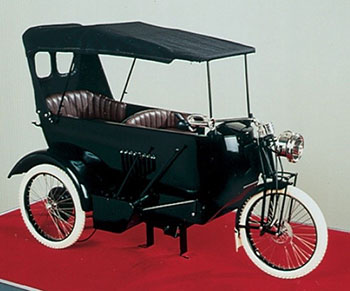

After the end of World War II, the economy Japan developed along an evolutionary path, where metallurgy, heavy And transport engineering, petrochemistry, however, since the mid-1970s, a revolutionary path of development began to prevail in the industry of Japan, and at present Japan is the world leader in almost all science-intensive sectors of the economy: microelectronics, robotics, biotechnology, pharmaceuticals etc.
A characteristic feature of the territorial structure of the economy of Japan is the most powerful concentration of industrial (3/4) and agricultural production (2/5) and non-production sectors (especially finance - 3/4, science and education - almost 1/2) in the Pacific industrial belt, stretching from Tokyo to Nagasaki.
At the same time, since the 1980s, Japanese economy there has been a process of deconcentration of production, a weakening of the attraction to sea coast and the development of internal regions, expressed in the creation of about 30 technopolises throughout the country - cities of science and the latest high-tech industries.
A feature of Japan is also the huge dependence of the economy on the import of raw materials and the export of finished products.
| Figure 92. Japan's dependence on imports of certain types of raw materials |
By production electricity(more than 1 trillion kWh) Japan occupies the 3rd place in the world, second only to the USA and China. The basis of modern energy in Japan is thermal power plants, which produce almost 60% of all electricity and use mainly imported raw materials (oil, gas and coal). A high level of development has been achieved by nuclear power, which accounts for over 30% of the electricity produced. The most powerful thermal power plants in the world, Kashima, and the nuclear power plant, Fukushima, have been built in Japan.
Ferrous metallurgy Japan is completely based on imported raw materials, and therefore almost the entire industry is concentrated in large port cities- Tokyo, Chibe, Yokohama, Kawasaki, Nagoya, Osaka, Kobe, Fukuyama, Wakayama, Kitakyushu. Japan is the world's largest importer of iron ore (about 120 million tons). The main suppliers of iron ore to Japan are Australia, India and Brazil. In terms of steel production (about 120 million tons), Japan ranks second in the world, second only to China, but unlike Chinese, Japanese steel is of the highest quality.
For non-ferrous metallurgy Japan is characterized by the final stages of production. In the production of refined copper, nickel, zinc, Japan ranks 3rd in the world, in the production of secondary aluminum - 2nd place. The largest centers of aluminum metallurgy are Toyama and Niigata, copper - Hitachi and Sakai, lead and zinc - Akita and Toyama.
mechanical engineering- the leading branch of Japanese industry, characterized by a complex structure, in which the most science-intensive and labor-intensive industries stand out: electronics, the electrical industry and transport engineering.
By production cars(more than 9.5 million pieces, or 1/5 of the world production) Japan has been consistently ranked 1st in the world for many years. Approximately half of the cars produced in Japan are intended for export.
main centers automotive industry Japan are Tokyo, Toyoda, Nagoya, Kobe, Osaka, Kawasaki.
For many decades, Japan has been constantly occupying. 1st place in the world in production courts. In some years, Japan produces up to 40% of their world tonnage. Japan's main shipbuilding centers are Yokohama, Yokosuka, Kobe, Nagasaki and Kure.
Received the highest level of development railway engineering(Kobe), especially production high-speed trains, and here aviation industry Japan is underdeveloped. material from the site
Japan is the undisputed leader in the production of electronic and household electrical products. In the late 1990s, Japanese companies, including their foreign subsidiaries, accounted for 90% of the world's production of VCRs, more than 60% of industrial robots, about 60% of color televisions, and 50% of machine tools with numerical control. main centers electronic and electrical industry Japan are Tokyo, Yokohama, Nagoya, Kyoto, Osaka and Hitachi.
Japan occupies one of the leading places in terms of development chemical industry. In Japan, almost all types of chemical industry are developed, from oil refining to fine chemicals. Chemical industry enterprises, using imported raw materials, gravitate towards the Pacific industrial belt, where such major centers like Tokyo, Yokohama, Nagoya, Osaka, Yokkaichi, etc.
Japan's specialization industries are also forest And pulp and paper(Sapporo, Tomakomai, Niigata) light(Tokyo, Nagoya, Kyoto, Osaka, Kanazawa) and food industry.
On this page, material on the topics:
japan development report summary
industry in japan briefly
Features of the industry of Japan
Science-intensive industries in Japan
Tokyo in the Middle Ages industrial development
Questions about this item:
There is an opinion that at Japanese car factories, Japanese workers, under the close supervision of Japanese managers, assemble exclusively Japanese cars for the domestic Japanese market. And all the rest - left-hand drive, including those intended for Russia - are assembled anywhere, but not in Japan and not by the Japanese.
Several assumptions support this view. First, the number of foreign assembly plants owned by the Japanese auto industry is large. Toyota, for example, has 52 factories in Africa, Asia, the Middle East and Europe. The rest of the Japanese manufacturers are more modest: Nissan has 20 factories, Honda has 11, Subaru has 3. Secondly, these foreign factories assemble everything the same as in Japan. Toyota Corolla is produced at at least 11 foreign enterprises, Honda Civic - at five. It can be assumed that it is these cars assembled outside the islands that are sold on the foreign market, and those assembled in Japan are operated only by the Japanese.
Drom.ru decided to find out where the left-hand drive "Japanese" are still produced, and from which countries they come to Russia. To do this, we contacted the official representative offices of Japanese auto companies in the Russian Federation and asked them for information on where they make new "Japanese" for Russia.
Who and what is bringing us?
Toyota Motor RUS LLC, the official representative of Toyota in Russia, sells cars assembled at Japanese and European factories in the Russian Federation. To date, we have officially sold 10 models. And most of them are imported directly from Japan.
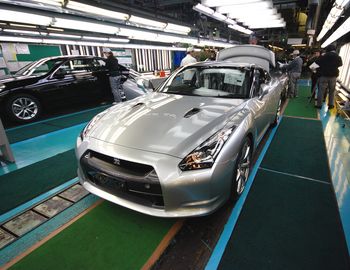
The new and previous generation Nissan Teana, as well as the Nissan Murano and Nissan X-Trail crossovers, are products of the Japanese Kyushu plant. Cars of the indicated brands produced at this enterprise are supplied both to the domestic market of Japan and are exported.
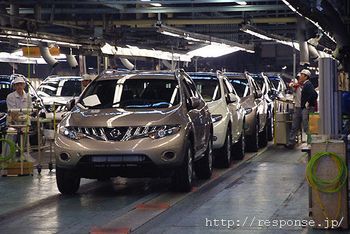
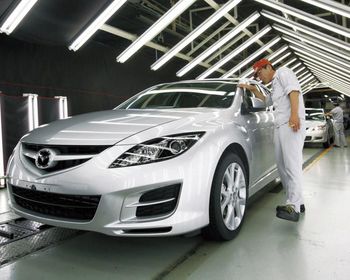
The official representative office of Subaru in the Russian Federation - Subaru Motor LLC - just like Mazda sells only Japanese-assembled cars, the only exception is Subaru Tribeca, it is assembled in the USA at a plant in Indiana, by the way, Toyota has also been assembled there for some time now Camry for the US market. Subaru Legacy sedans, Subaru Impreza and Subaru Impreza WRX hatchbacks, Subaru Forester and Subaru Outback station wagons are delivered to us directly from the Japanese plant Gunma (Ootashi city). From the same enterprise, they also diverge in Japan.
In the late 50s and early 60s of the 20th century, the country's production potential, which had been based on light industry since the pre-war years, was reoriented to heavy industry. In addition, a course was taken for the predominant development of science-intensive industries with some containment of energy-intensive and metal-intensive industries. In the 70s of the 20th century, electronics, precise and complex instrumentation, optics, the production of cameras, medicines, scientific and laboratory equipment began to develop at a faster pace.
Japan's energy base is imported oil (75% in the fuel and energy balance). There are over 1,000 power plants in Japan. The government program provides for a significant increase in this number. The basis is made up of large thermal power plants located near big cities. But about 600 HPPs also play a certain role.
Nuclear power is playing an increasingly important role. There are 39 power units operating in the country, and about 12 more are under completion. In the nuclear industry, the main role is played by the monopolies - Mitsui, Mitsubishi, Sumitomo. The supply of raw materials is made mainly from.
In recent decades, in connection with the development of new industries in Japan, the demand for non-ferrous and rare metals has increased.
Most of the copper smelters are located near mines in the northern part of the island of Honshu and Shikoku (ores are poor, they are unprofitable). Polymetallic ores, together with sulfur and pyrites, are found on almost all major islands of Japan. Nevertheless, lead has to be imported from Australia, Canada and, like aluminum.
Interestingly, rare elements needed in electronics and precision instrumentation - cadmium, selenium, tellurium, rhenium, indium, thallium, germanium - are obtained by recycling waste from the production of copper and polymetals, as well as coke production.
Japan is one of the most developed in the world. The main large ones are located in the main industrial regions of the country (Tokyo - Yokohama, Nagoya, Osaka - Kobe). Some types of mechanical engineering originated in northwestern Kyushu, especially in the city of Nagasaki (shipbuilding).
In general, the development of the Japanese economy after World War 2 is referred to as the "Japanese miracle". The mechanism of such a miracle can be considered in more detail on the example of the automotive industry.
After the First World War, the automotive industry in Japan was mainly occupied with copying American designs and technologies. In the mid-30s of the 20th century, a law was passed in the country, according to which all enterprises located in Japan became the property of Japan. As a result, American companies were forced to curtail their activities in Japan. As a result, the country's automotive industry was increasingly lagging behind the world level. The gap in technology increased sharply in the year of the war, when foreign experience became generally unavailable. After the defeat of Japan in World War II, during the years of occupation, the development of the automotive industry was artificially hampered by the introduction of various kinds of prohibitions and restrictions, in particular on production, by the occupying forces. And although in 1949 they were removed, and the automobile industry enterprises were removed from the list to be dismantled and exported under reparations, nevertheless, the end of the 40s is regarded as a period of struggle for the survival of the Japanese automobile industry.
In addition, the import of foreign cars caused considerable damage to the industry at that time. Officially, it was banned until 1949, but cars were imported by the Americans. To a certain extent, the development of the national automotive industry was also hampered by the fact that in the 1940s the leadership of Japan did not have a unanimous opinion about the prospects for the industry. The Bank of Japan and financial circles assessed capital investments in the automotive industry as unpromising. Specialists from the Ministry and Industry (MVTP) did not agree with this approach. They believed that this industry should become "the locomotive of industrial development." The MITI recommended limiting car imports and forming its own base to lift the industry.
On June 26, 1950, the Korean War began. To support the fighting, the United States began to buy steel, automobiles, pharmaceuticals, textiles and much more from Japan. The Japanese called this event "the blessed rain after the drought." American special orders allowed the automobile companies Toyota, Nissan, Isuzu to become one of the leading industrial companies in the country. The American Automobile Restoration Program played a big role in the rise of the automobile industry. It has been operating since 1945, when, after the demobilization of the US Army, cars from all over the military operations began to be brought in.
The government took strict control over the development of the industry. Having strengthened the financial position due to orders from the US Army, updating equipment, the automotive industry in Japan began to develop rapidly.
The first attempts to enter the automotive markets ended in failure. Although the prices for Japanese cars were low, their quality lagged far behind world standards. At the state level, the task was set to achieve an increase in the reliability of products, based on the fact that quality will become the main tool in the competition in the future. This turned out to be a far from simple matter, and success for the Japanese automotive industry in foreign markets came only at the end of the 60s, when a production system was created that ensured optimal production scales, low costs and, most importantly, excellent quality of cars due to strict control on each workplace by a direct executor, who also has a high qualification.
The 70s were triumphant for Japanese car companies. It was then that they started talking about the "Japanese" stage in the global automotive industry. The "shock" of 1973 caused gasoline prices to rise. As a result, buyers began to give preference to small-sized, economical cars, and Japanese designers worked on such models for many years, based on the conditions of the domestic market. In the US, buyers were prepared to wait months for deliveries of Japanese cars. American dealers traveled to Japan to expedite shipments. Already in 1974, Japan bypassed the export of cars and since then has not been inferior to the first place in the world in this indicator.
In 1980, Japan for the first time crossed the 10 million milestone in car production. Japan came out on top in the world in car production and held it for 15 years. Now the production of cars in Japan itself has declined for a number of reasons, primarily due to the appreciation of the yen. The United States again came out on top in the world in this indicator. But this did not cause much concern among the management of Japanese companies. Long ago, since the mid-80s, they began to transfer production abroad, including to the United States.
Japan is actively cooperating in the global "Automotive Industry Development Program", in which 7 developed powers (USA, Japan,) participate. These countries account for 75% of world car production and 65% of new car sales. All program participants are unanimous in their opinion that severe trade restrictions, protectionism and market isolation are incompatible with the development of the global automotive industry.
Japanese companies proceed from the fact that the domestic market should be filled with local production, providing employment, and the fundamental technological secrets should be kept inside the country. Transferring production abroad, they reserve the manufacture of the most important components - engines, gearboxes.
Japanese companies began developing their production in all existing and potential automotive markets. Companies seek to establish manufacturing bases directly in the US, . The enterprises included in these bases must supply products to their regions in accordance with local requirements and demand. First of all, Japanese companies began to establish their own production in the capacious American market. Japanese companies pay great attention to creating their production base in Asian countries, especially in Asia, whose car market is regarded as very promising.
Looking into the future, most experts state a change in the balance of power in the global automotive industry and recommend using, if possible, the Japanese experience in organizing production and management. The Japanese automotive industry leads the world in low production costs. According to foreign experts, this leadership is noticeable, for example, in the organization of inventory management. If General Motors could manage its inventory as effectively as Toyota, it could free up several billion dollars that it has frozen in warehouses and shops in the form of work in progress, raw materials and components. Working on the system of "delivery just in time", Japanese companies create significant reserves to fight price competition in foreign markets.
Unlike large American companies that tried to reduce production costs by increasing the number of cars in the series, Japanese companies began to focus on the introduction of flexible production systems that allow the production of small series of models on the same conveyor, taking into account the personal requests of customers.
In terms of the production of many types of chemical goods, Japan ranks third in the world (after the USA and Germany). Manufacture of chemical fiber is located mainly in the southwest of Japan. The most significant combines are in the cities of Hiroshima, Yamaguchi.
The light industry works both on local chemical fiber and on cotton and wool from the USA, Australia and South Africa.
Among the ancient national industries, a prominent place is occupied by ceramic production. There are over 170 kaolin deposits in Japan, about 35 thousand enterprises for the production of ceramics.
In terms of the number of enterprises, woodworking is second only to the textile industry. There are up to 30 thousand sawmills and plywood factories in the country, in addition, there are specialized enterprises for the production of containers, Japanese national shoes (geta), umbrellas, fans, dishes, bamboo pipes, etc. large sawmills are located in the vicinity of large cities - Nagoya, Tokyo, Yokohama, Osaki-Kobe, Hiroshima, Okayama, in the north of Kyushu and in the south of Hokkaido.



